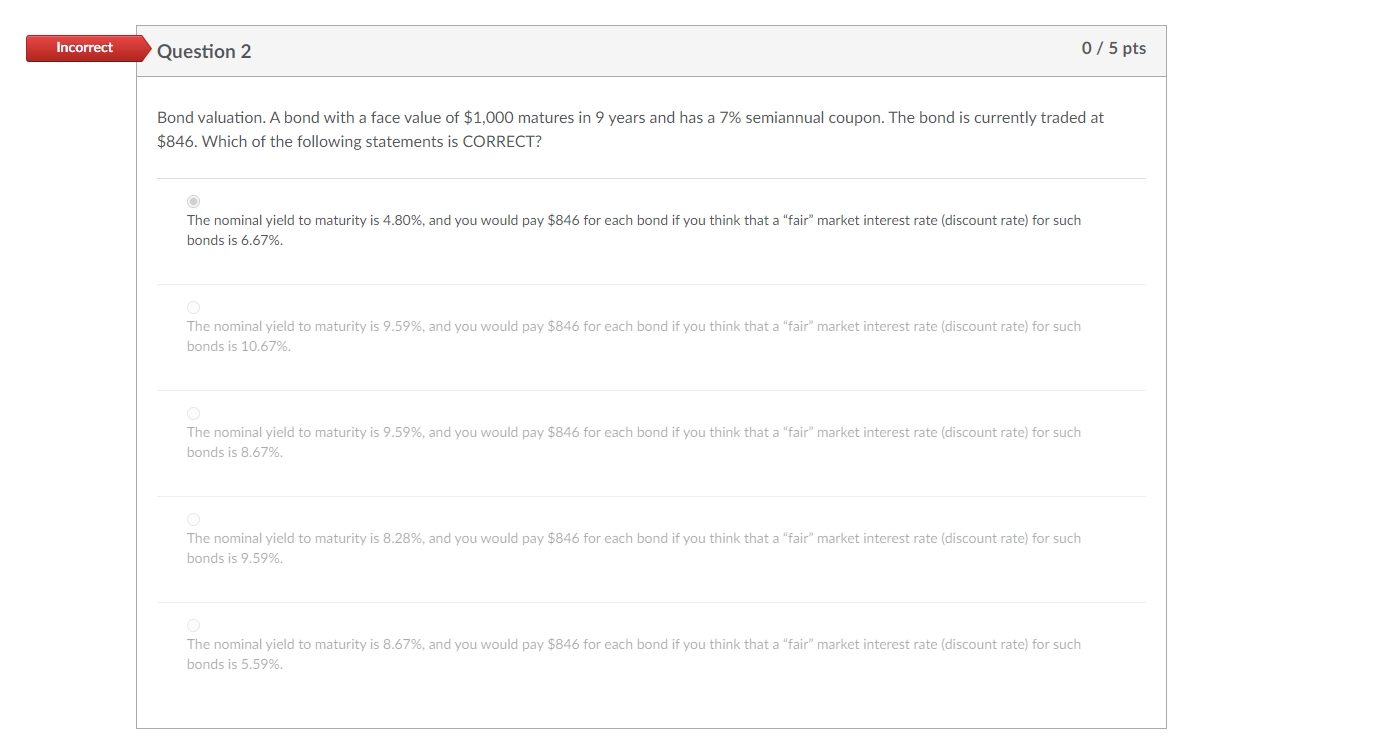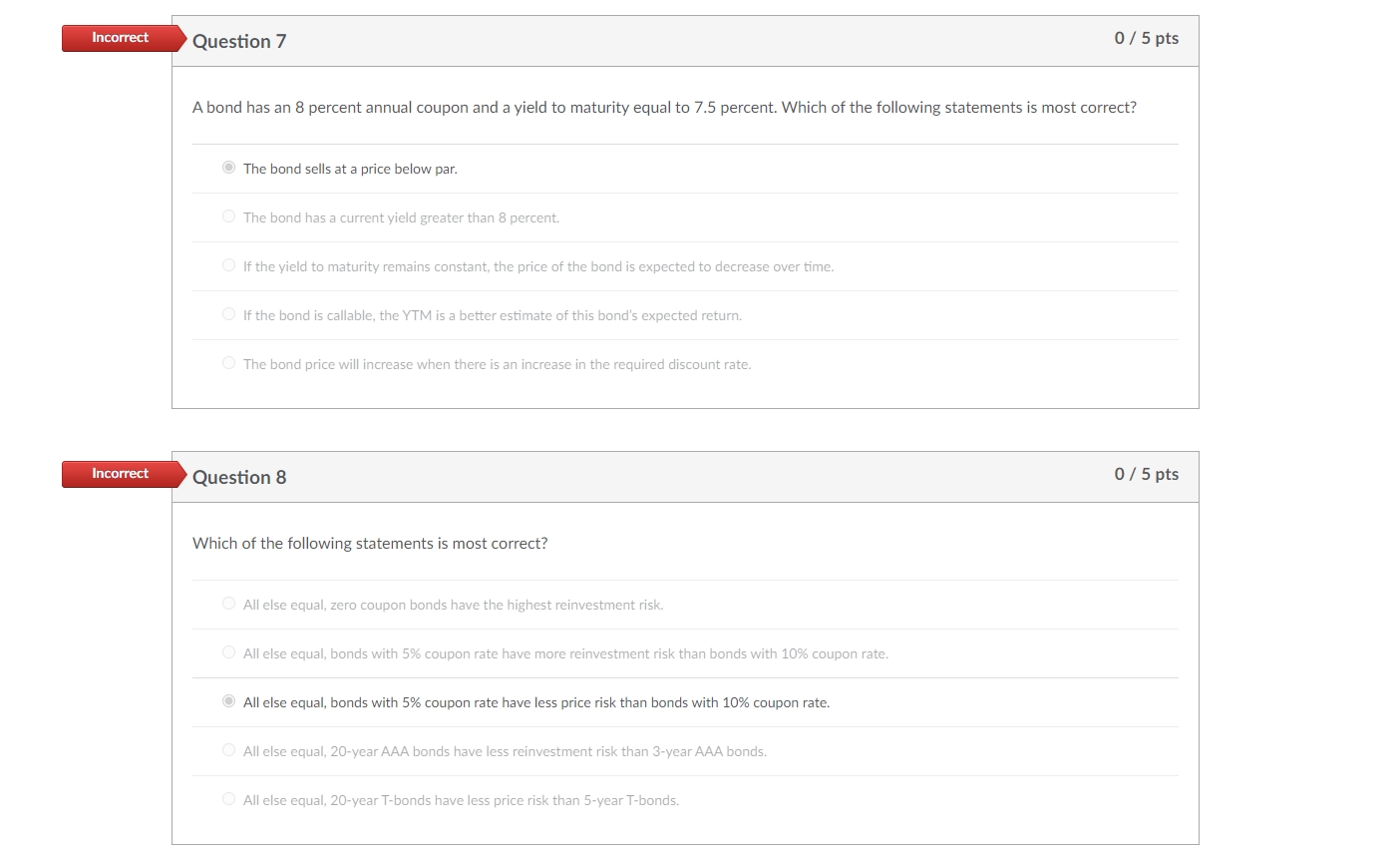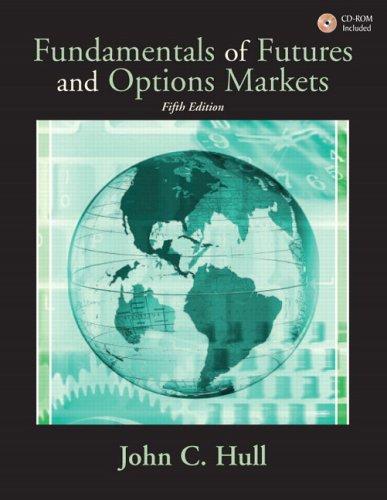Answered step by step
Verified Expert Solution
Question
1 Approved Answer
Bond valuation. A bond with a face value of $1,000 matures in 9 years and has a 7% semiannual coupon. The bond is currently traded

 Bond valuation. A bond with a face value of $1,000 matures in 9 years and has a 7% semiannual coupon. The bond is currently traded at \$846. Which of the following statements is CORRECT? The nominal yield to maturity is 4.80%, and you would pay $846 for each bond if you think that a "fair" market interest rate (discount rate) for such bonds is 6.67%. The nominal yield to maturity is 9.59%, and you would pay $846 for each bond if you think that a "fair" market interest rate (discount rate) for such bonds is 10.67%. The nominal yield to maturity is 9.59%, and you would pay $846 for each bond if you think that a "fair" market interest rate (discount rate) for such bonds is 8.67%. The nominal yield to maturity is 8.28%, and you would pay $846 for each bond if you think that a "fair" market interest rate (discount rate) for such bonds is 9.59%. The nominal yield to maturity is 8.67%, and you would pay $846 for each bond if you think that a "fair" market interest rate (discount rate) for such bonds is 5.59%. A bond has an 8 percent annual coupon and a yield to maturity equal to 7.5 percent. Which of the following statements is most correct? The bond sells at a price below par. The bond has a current yield greater than 8 percent. If the yield to maturity remains constant, the price of the bond is expected to decrease over time. If the bond is callable, the YTM is a better estimate of this bond's expected return. The bond price will increase when there is an increase in the required discount rate. Question 8 0/5 pts Which of the following statements is most correct? All else equal, zero coupon bonds have the highest reinvestment risk. All else equal, bonds with 5% coupon rate have more reinvestment risk than bonds with 10% coupon rate. All else equal, bonds with 5% coupon rate have less price risk than bonds with 10% coupon rate. All else equal, 20-year AAA bonds have less reinvestment risk than 3-year AAA bonds. All else equal, 20-year T-bonds have less price risk than 5-year T-bonds
Bond valuation. A bond with a face value of $1,000 matures in 9 years and has a 7% semiannual coupon. The bond is currently traded at \$846. Which of the following statements is CORRECT? The nominal yield to maturity is 4.80%, and you would pay $846 for each bond if you think that a "fair" market interest rate (discount rate) for such bonds is 6.67%. The nominal yield to maturity is 9.59%, and you would pay $846 for each bond if you think that a "fair" market interest rate (discount rate) for such bonds is 10.67%. The nominal yield to maturity is 9.59%, and you would pay $846 for each bond if you think that a "fair" market interest rate (discount rate) for such bonds is 8.67%. The nominal yield to maturity is 8.28%, and you would pay $846 for each bond if you think that a "fair" market interest rate (discount rate) for such bonds is 9.59%. The nominal yield to maturity is 8.67%, and you would pay $846 for each bond if you think that a "fair" market interest rate (discount rate) for such bonds is 5.59%. A bond has an 8 percent annual coupon and a yield to maturity equal to 7.5 percent. Which of the following statements is most correct? The bond sells at a price below par. The bond has a current yield greater than 8 percent. If the yield to maturity remains constant, the price of the bond is expected to decrease over time. If the bond is callable, the YTM is a better estimate of this bond's expected return. The bond price will increase when there is an increase in the required discount rate. Question 8 0/5 pts Which of the following statements is most correct? All else equal, zero coupon bonds have the highest reinvestment risk. All else equal, bonds with 5% coupon rate have more reinvestment risk than bonds with 10% coupon rate. All else equal, bonds with 5% coupon rate have less price risk than bonds with 10% coupon rate. All else equal, 20-year AAA bonds have less reinvestment risk than 3-year AAA bonds. All else equal, 20-year T-bonds have less price risk than 5-year T-bonds Step by Step Solution
There are 3 Steps involved in it
Step: 1

Get Instant Access to Expert-Tailored Solutions
See step-by-step solutions with expert insights and AI powered tools for academic success
Step: 2

Step: 3

Ace Your Homework with AI
Get the answers you need in no time with our AI-driven, step-by-step assistance
Get Started


